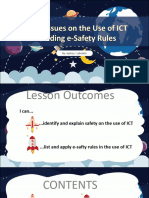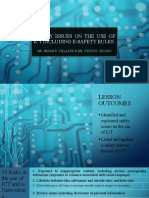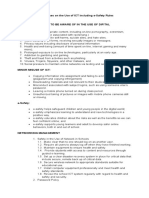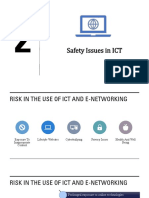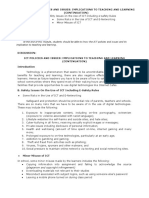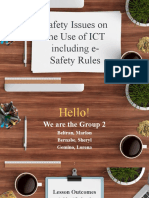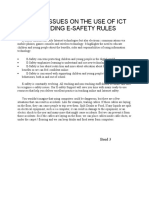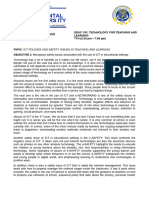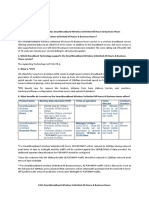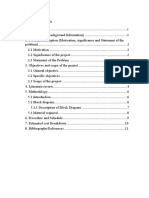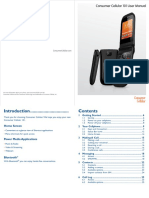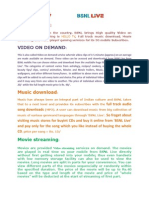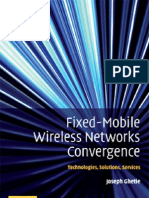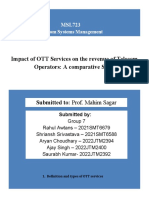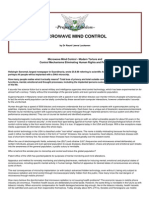0% found this document useful (0 votes)
97 views16 pagesTopic 2
This document provides guidelines for safety when using information and communication technology (ICT). It discusses ergonomic risks from prolonged computer use and the importance of taking breaks. It also addresses potential online risks students may face, such as exposure to inappropriate content, cyberbullying, and privacy issues. The document outlines minor misuses of ICT in schools and emphasizes the role of e-safety education. It proposes network management strategies in schools, such as password policies and regulating personal device use. Finally, it recommends safety practices for setting up an educational technology room, like providing adjustable furniture and ensuring adequate spacing between workstations.
Uploaded by
Shawn BacaniCopyright
© © All Rights Reserved
We take content rights seriously. If you suspect this is your content, claim it here.
Available Formats
Download as PDF, TXT or read online on Scribd
0% found this document useful (0 votes)
97 views16 pagesTopic 2
This document provides guidelines for safety when using information and communication technology (ICT). It discusses ergonomic risks from prolonged computer use and the importance of taking breaks. It also addresses potential online risks students may face, such as exposure to inappropriate content, cyberbullying, and privacy issues. The document outlines minor misuses of ICT in schools and emphasizes the role of e-safety education. It proposes network management strategies in schools, such as password policies and regulating personal device use. Finally, it recommends safety practices for setting up an educational technology room, like providing adjustable furniture and ensuring adequate spacing between workstations.
Uploaded by
Shawn BacaniCopyright
© © All Rights Reserved
We take content rights seriously. If you suspect this is your content, claim it here.
Available Formats
Download as PDF, TXT or read online on Scribd
/ 16
